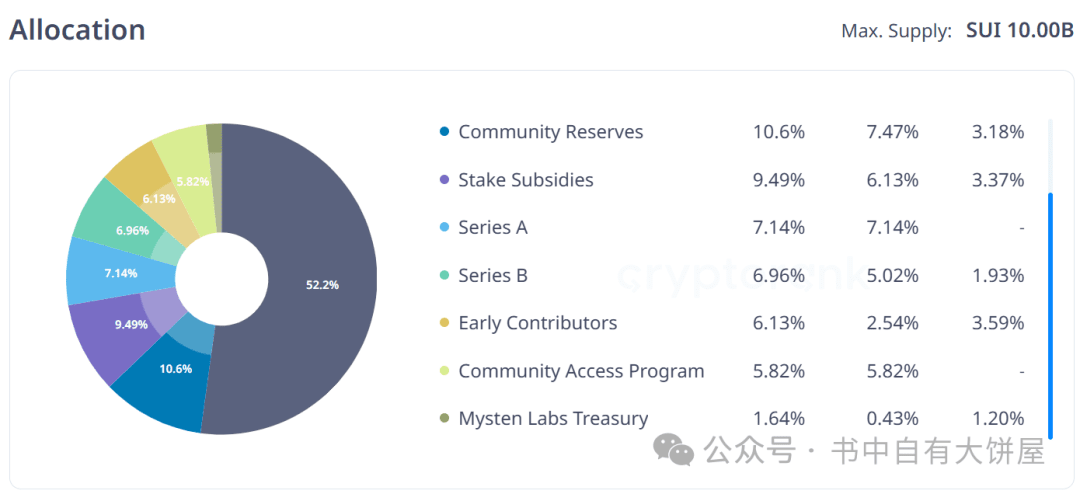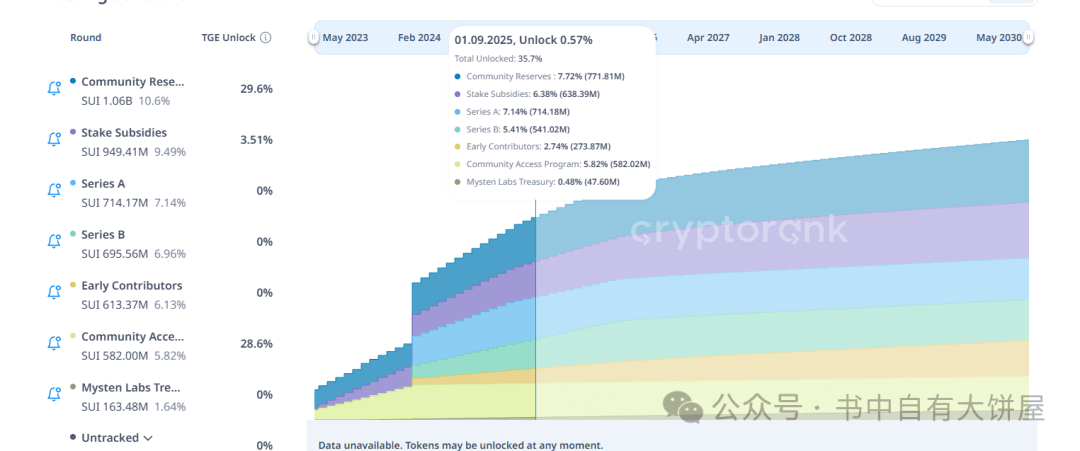Today, let's take a look at the SUI project, as many people have been asking me about it recently, and this project has also performed quite well recently. So how does SUI currently compare in terms of cost-effectiveness? (The risks have quietly arrived!)
First, let me express a few of my personal views:
1. The internet has memory. I remember when it just launched in 2023, I worked hard with community partners to get airdrops, but it ended up being converted to an exchange IEO, directly backstabbing users. This is definitely something to remember as a major mistake. The community was in an uproar, but unexpectedly the subsequent operations were not bad, and it survived. The SUI-IEO whitelist acquisition method - airdrops are gone.
2. One of the MOVE series twins, the other being Aptos. Surprisingly, it has surpassed Aptos after being launched later. Currently, it has already exceeded Aptos in terms of market value and TVL. The market rally is just, at least it has allowed many early adopters to earn money.
Let’s start with one good and one bad, then look at the fundamentals.
1. Project Introduction
Sui is a high-performance Layer 1 public chain developed by Mysten Labs and built on the Move language, aiming to provide scalable, low-latency, high-throughput blockchain infrastructure for Web3, particularly suitable for building games, social applications, NFTs, and financial applications.
The MOVE language is a product of the Lirba project that Zuckerberg at Facebook wanted to create for blockchain. Due to SEC regulations, LIRBA was stillborn, and the Lirba team rebranded to Diem, later splitting into two teams: one is APT and the other is SUI.

Sui's core advantage lies in its object-centric model and parallel execution engine, which differs from the traditional blockchain's linear execution by transaction order, giving it a natural advantage in handling large-scale user interactions.
Specifically, what is parallel execution? We have also explained it in the Aptos article. As shown in the figure below, it allows for multi-lane overtaking. Currently, the TPS of APTOS can reach 10,000, while the actual TPS of SUI is only about 1,000+, although the theoretical value may reach 120,000. However, current browser data shows it is only between 50-300. In contrast, SOL's TPS can consistently maintain between 3,000-4,000. Therefore, from this perspective, there is still a significant gap in application between the current MOVE twin blockchains. After all, the TPS of SOL is an order of magnitude higher than that of SUI, even though the highest theoretical TPS is twice that of SOL. It's like saying my bank vault is twice the size of yours, but my bank's current utilization rate is only one-tenth of SOL.

2. Technical Architecture Features
1. Move language (improved version)
Originates from Facebook's Diem project, with strong security and clear resource management. Specific MOVE features:
Sui has been expanded to support object storage and composability.
2. Object Model (Object-Oriented Model)
All assets exist in the form of 'objects' and can be created, modified, and transferred.
Each object has a unique ID, stored under the account address.
Supports parallel processing of non-conflicting transactions, significantly increasing TPS.
3. Narwhal & Bullshark consensus mechanism
Narwhal: An efficient data availability layer that ensures transactions are not lost, based on a DAG architecture.
Bullshark: An efficient consensus protocol used for ordering complex transactions, based on BFT.
For transactions that do not require sorting (such as P2P transfers), consensus can be bypassed, greatly improving performance.
4. Horizontal Scalability
Theoretically supports infinite horizontal scaling, suitable for large-scale on-chain applications (games, e-commerce, social networks, etc.).

3. Team Background
Mysten Labs was founded by core technical members of the original Facebook (Meta) Diem project:
Evan Cheng: CEO, former Engineering Director at Meta Novi, early member of the LLVM project, and also the inventor of the MOVE language.
George Danezis: Chief Scientist, former blockchain researcher at Meta.
Core team members mostly come from tech giants like Meta, Google, and Apple, possessing rich backgrounds in blockchain systems, cryptography, and security engineering.
The team is actually quite good, all are real names, and there are some big names involved, which is already much stronger than many projects.

4. Financing Situation
Sui has reached a total financing scale of 339 million USD, completing a 200 million USD Series B financing in 2022, with a valuation of 2 billion USD. Major investors include: a16z (Andreessen Horowitz), FTX Ventures (now exited), Jump Crypto, Binance Labs, and Coinbase Ventures.
5. Ecological Progress
Sui is actively building its ecosystem, with over 80 projects currently:
DeFi: SUIlend, Turbos Finance, Aftermath Finance, DeepBook (built-in order book engine)
NFT / Games: Origin Byte, BlueMove, SuiFrens
Wallets: Sui Wallet, Ethos Wallet, Martian Wallet
Tool infrastructure: Sui Explorer, Sui Scan, Sui Name Service (SNS), etc.
6. Tokenomics
The total supply of tokens is 10 billion, with 3.45 billion currently in circulation. 52% will be unlocked after 2030, 10.6% for community reserves, 9.49% for staking subsidies, 7.14% for Series A, 6.96% for Series B financing, 6.13% for early contributors, 5.8% for early community projects, and 1.64% for the Mysten Foundation.

The release is as shown in the table below. Currently, 0.57% of the coins will be unlocked each month, which is approximately 220 million USD based on the current price.

At least SUI will take 7 years to fully unlock, which is relatively more reasonable compared to many projects that unlock in 2-3 years. However, SUI's market value is only 13 billion, unlocking 220 million each month, and will continue to unlock for several years, so there is still pressure on selling.
Currently, SUI's TVL ranks eighth among all public chain projects, lower than base and arb, while arb's FDV is 4 billion, but SUI's FDV has now reached 38 billion!
If you say ARB is layer two, then let's compare it with TRON. Currently, TRON's TVL is 2.5 times that of SUI, and TRON's FDV is 28 billion, which means SUI's FDV is surprisingly higher than TRON's.
Let me give you another data point: Dogecoin currently has a market value of 28 billion, so why does a newly launched public chain SUI have a value of 38 billion?
Based on SUI's current FDV, it has already entered the top 8 projects. So be cautious of high-altitude risks!!
At least from the current perspective, it has reached a market value that does not suit its inherent value, so it is definitely not recommended to enter the market now. The collapse of an empire can happen in an instant, and I've seen too many people shouting bullish sentiments about it, which is the riskiest moment! You may come back to thank me in 2-3 months!!




